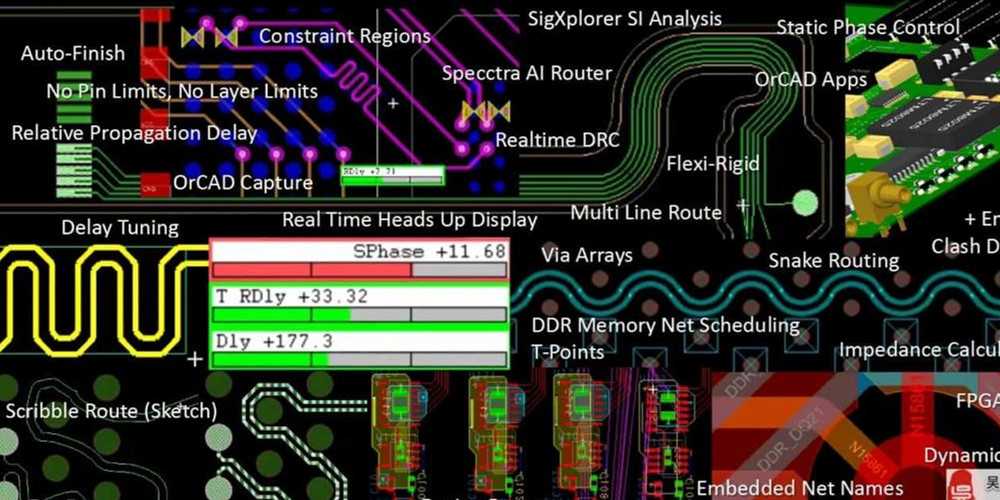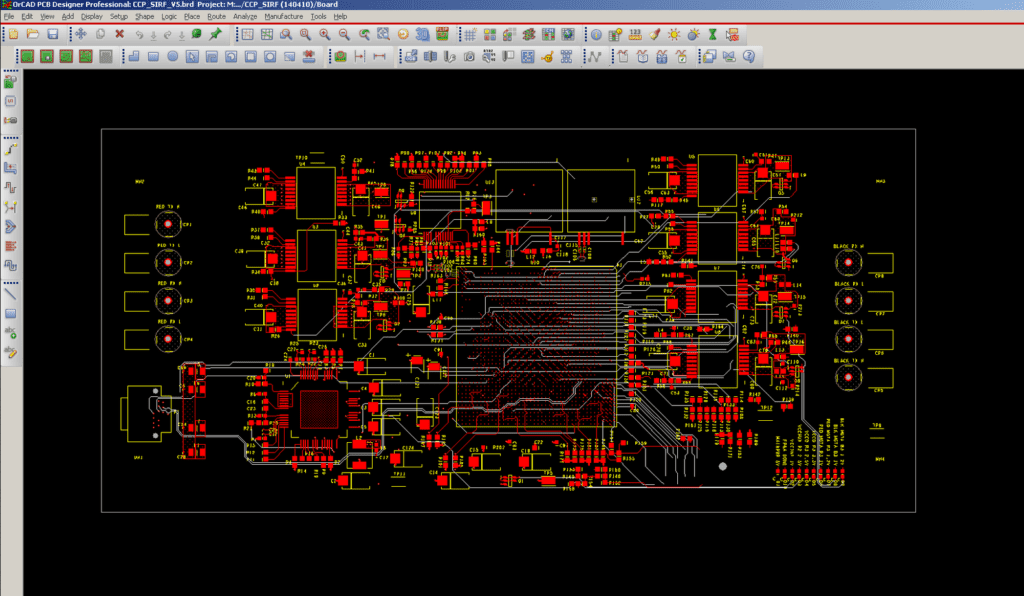Electrical engineering circuit design is a complex and essential field that involves the planning, development, and implementation of electrical circuits. These circuits are used in a wide range of applications, from simple electronic devices to complex industrial machinery. The process of circuit design involves a deep understanding of electrical principles, as well as a mastery of various software tools and programming languages.
One of the key challenges of circuit design is ensuring that the circuit is reliable and efficient. This requires careful analysis of the electrical properties of the components used in the circuit, as well as an understanding of the various factors that can affect circuit performance. Additionally, circuit designers must be able to work with a variety of different materials and technologies, including semiconductors, resistors, capacitors, and inductors.
Overall, electrical engineering circuit design is a fascinating and constantly evolving field that plays a crucial role in the development of modern technology. Whether you are interested in pursuing a career in electrical engineering or simply want to learn more about how electronic devices work, understanding the principles of circuit design is an essential first step.

Basic Concepts of Electrical Engineering Circuit Design
Circuit Elements
Circuit elements are the building blocks of any electrical circuit. They can be classified into two categories: passive and active. Passive elements include resistors, capacitors, and inductors, while active elements include transistors, diodes, and operational amplifiers. Each element has its own unique properties that affect how it behaves in a circuit.
Ohm’s Law
Ohm’s Law states that the current through a conductor between two points is directly proportional to the voltage across the two points. This relationship is represented by the equation I = V/R, where I is the current, V is the voltage, and R is the resistance of the conductor. Ohm’s Law is a fundamental concept in electrical engineering circuit design and is used extensively in circuit analysis.
Kirchhoff’s Laws
Kirchhoff’s Laws are two fundamental principles that govern the behavior of electrical circuits. The first law, known as Kirchhoff’s Current Law (KCL), states that the sum of the currents entering a node in a circuit must equal the sum of the currents leaving that node. The second law, known as Kirchhoff’s Voltage Law (KVL), states that the sum of the voltages around any closed loop in a circuit must equal zero.
Circuit Analysis Techniques
There are several techniques used to analyze electrical circuits, including nodal analysis, mesh analysis, and superposition. Nodal analysis involves analyzing the voltage at each node in a circuit to determine the current flowing through each element. Mesh analysis involves analyzing the current flowing through each mesh in a circuit to determine the voltage across each element. Superposition involves breaking down a complex circuit into simpler circuits and analyzing each circuit separately before combining the results.
In conclusion, understanding the basic concepts of electrical engineering circuit design is crucial for anyone working in the field. By knowing the properties of circuit elements, applying Ohm’s Law, and using Kirchhoff’s Laws and circuit analysis techniques, engineers can design and analyze complex circuits with confidence and accuracy.
Design of Analog Circuits

Analog circuits are designed to process continuous signals that vary in amplitude and frequency. These circuits are widely used in various applications such as audio systems, power supplies, and communication systems. The design of analog circuits involves selecting appropriate components and configuring them to achieve the desired functionality.
Amplifiers
Amplifiers are used to increase the amplitude of a signal. The most commonly used amplifier is the operational amplifier (op-amp), which has a high gain and can be configured in various ways to achieve different amplification characteristics. Some common op-amp configurations include inverting amplifier, non-inverting amplifier, and differential amplifier. The gain of an amplifier can be calculated using the following formula:
Gain = Vout / Vin
where Vout is the output voltage and Vin is the input voltage.
Filters
Filters are used to remove unwanted frequencies from a signal. There are two main types of filters: passive filters and active filters. Passive filters use only passive components such as resistors, capacitors, and inductors, while active filters use both passive and active components such as op-amps. Some common types of filters include low-pass filter, high-pass filter, band-pass filter, and band-stop filter.
Oscillators
Oscillators are used to generate periodic signals. The most commonly used oscillator is the RC oscillator, which uses a resistor and a capacitor to generate a sine wave. Other types of oscillators include the crystal oscillator, which uses a crystal to generate a stable frequency, and the LC oscillator, which uses an inductor and a capacitor to generate a sine wave.
In conclusion, the design of analog circuits involves selecting appropriate components and configuring them to achieve the desired functionality. Amplifiers, filters, and oscillators are some of the most commonly used analog circuits, each with its own unique characteristics and applications.
Design of Digital Circuits

Logic Gates
Logic gates are the basic building blocks of digital circuits. They are electronic circuits that perform logical operations on one or more inputs to produce a single output. There are several types of logic gates, including AND, OR, NOT, NAND, NOR, and XOR gates. Each gate has a specific truth table that defines its behavior.
Combinational Circuits
Combinational circuits are digital circuits that produce an output based solely on the current input values. They are made up of logic gates and can be designed to perform a wide range of functions, including arithmetic and logic operations. Examples of combinational circuits include adders, subtractors, and multiplexers.
Sequential Circuits
Sequential circuits are digital circuits that use feedback to store information and produce an output based on both the current input values and the stored information. They are made up of combinational circuits and memory elements, such as flip-flops. Sequential circuits can be designed to perform a wide range of functions, including counting, timing, and data storage.
In the design of digital circuits, it is important to consider factors such as power consumption, speed, and reliability. The choice of logic gates, combinational circuits, and sequential circuits will depend on the specific requirements of the circuit. By carefully selecting the appropriate components and designing the circuit to minimize power consumption and maximize speed and reliability, it is possible to create highly efficient and effective digital circuits.
Power Electronics
Power Semiconductor Devices
Power semiconductor devices are crucial components in power electronics circuits. These devices are used to control and convert electrical power. Some commonly used power semiconductor devices include diodes, thyristors, and transistors. Each of these devices has unique characteristics that make them suitable for different applications.
Diodes are used to convert AC power to DC power. They allow current to flow in only one direction. Thyristors are used in AC power control circuits. They can be used to control the amount of power delivered to a load. Transistors are used in DC power control circuits. They can be used to switch power on and off rapidly.
AC-DC Converters
AC-DC converters are used to convert AC power to DC power. They are commonly used in power supplies for electronic devices. AC-DC converters can be designed using a variety of topologies, including half-wave rectifiers, full-wave rectifiers, and bridge rectifiers.
Half-wave rectifiers are the simplest type of AC-DC converter. They use a single diode to convert AC power to DC power. Full-wave rectifiers use four diodes to convert AC power to DC power. They are more efficient than half-wave rectifiers. Bridge rectifiers are the most efficient type of AC-DC converter. They use four diodes and can convert both positive and negative cycles of AC power to DC power.
DC-DC Converters
DC-DC converters are used to convert DC power from one voltage level to another. They are commonly used in power supplies for electronic devices. DC-DC converters can be designed using a variety of topologies, including buck converters, boost converters, and buck-boost converters.
Buck converters are used to step down DC voltage levels. They are efficient and commonly used in power supplies for electronic devices. Boost converters are used to step up DC voltage levels. They are commonly used in power supplies for LED lighting and other applications. Buck-boost converters can be used to step up or step down DC voltage levels. They are commonly used in power supplies for battery-powered devices.
In conclusion, power electronics is an important field of electrical engineering that deals with the design and control of power circuits. Power semiconductor devices, AC-DC converters, and DC-DC converters are all crucial components of power electronics circuits. By understanding the characteristics and applications of these components, engineers can design efficient and reliable power electronics systems.
Applications of Electrical Engineering Circuit Design

Electrical engineering circuit design has a wide range of applications in various fields. Some of the most common applications of electrical engineering circuit design are in the fields of telecommunications, consumer electronics, and automotive electronics.
Telecommunications
In the field of telecommunications, electrical engineering circuit design plays a vital role in the design and development of communication systems. The circuits used in telecommunication systems are responsible for transmitting and receiving signals, and ensuring that the signals are of high quality and can be transmitted over long distances. Some of the common applications of electrical engineering circuit design in telecommunications include:
- Designing circuits for mobile phones, satellite phones, and other handheld devices
- Developing circuits for wireless communication systems such as Wi-Fi, Bluetooth, and Zigbee
- Designing circuits for fiber optic communication systems
Consumer Electronics
Consumer electronics is another area where electrical engineering circuit design is widely used. The circuits used in consumer electronics are responsible for controlling and powering various devices such as televisions, audio systems, and home appliances. Some of the common applications of electrical engineering circuit design in consumer electronics include:
- Developing circuits for power supplies and battery chargers
- Designing circuits for audio amplifiers and speakers
- Developing circuits for control systems such as remote controls and touchscreens
Automotive Electronics
Automotive electronics is another area where electrical engineering circuit design is widely used. The circuits used in automotive electronics are responsible for controlling and powering various systems in vehicles such as engines, brakes, and entertainment systems. Some of the common applications of electrical engineering circuit design in automotive electronics include:
- Developing circuits for engine control systems
- Designing circuits for entertainment systems such as audio and video players
- Developing circuits for safety systems such as airbags and anti-lock brakes
In conclusion, electrical engineering circuit design has a wide range of applications in various fields such as telecommunications, consumer electronics, and automotive electronics. The circuits designed by electrical engineers are responsible for controlling and powering various devices and systems, and ensuring that they function efficiently and reliably.

